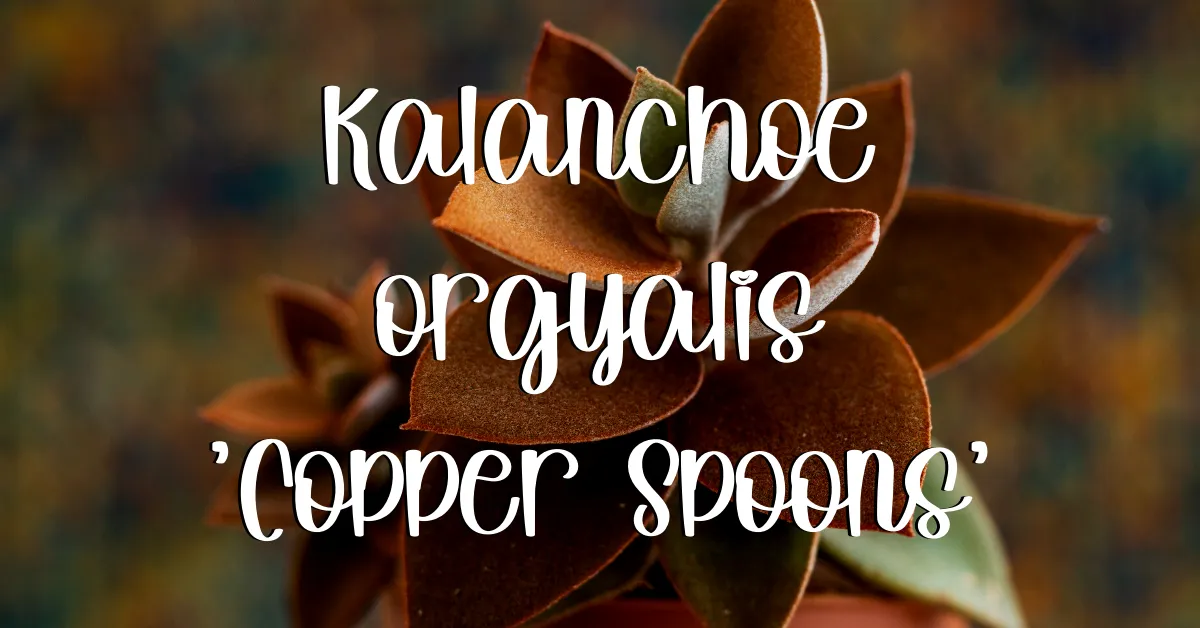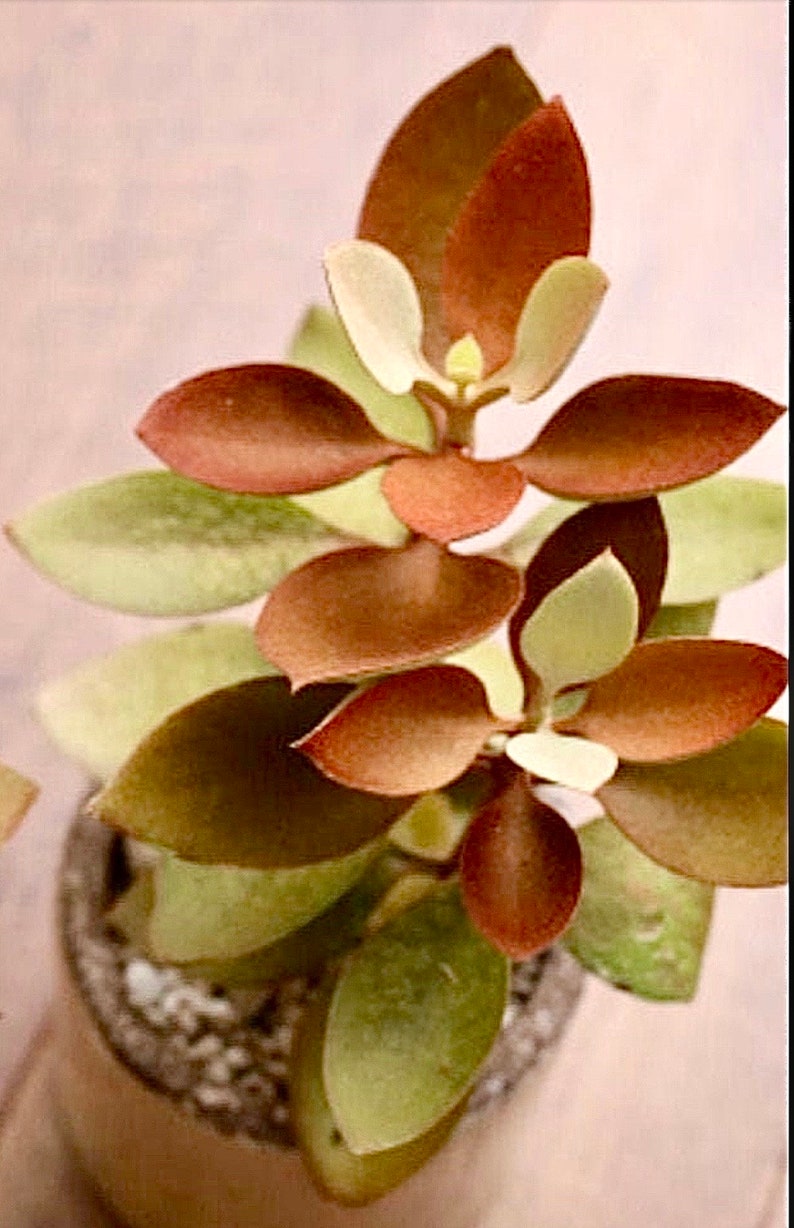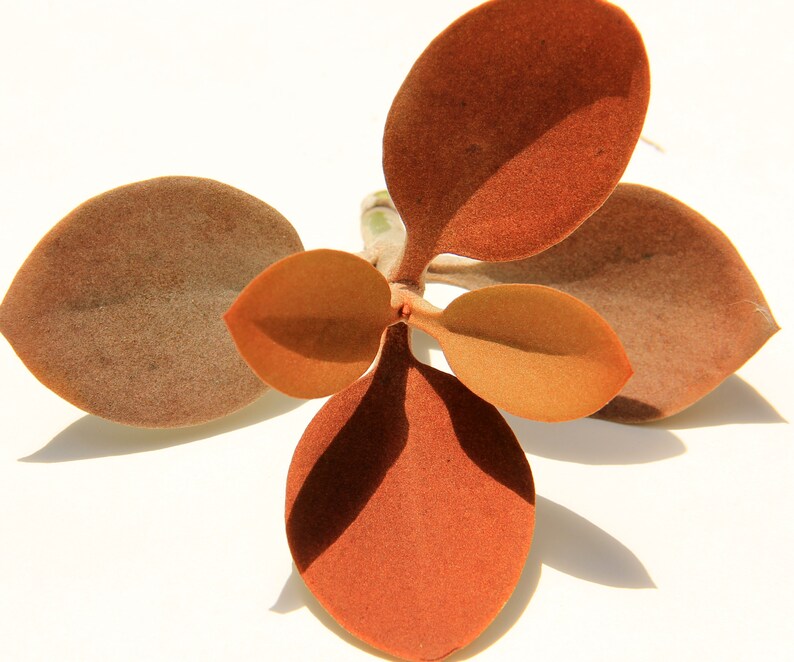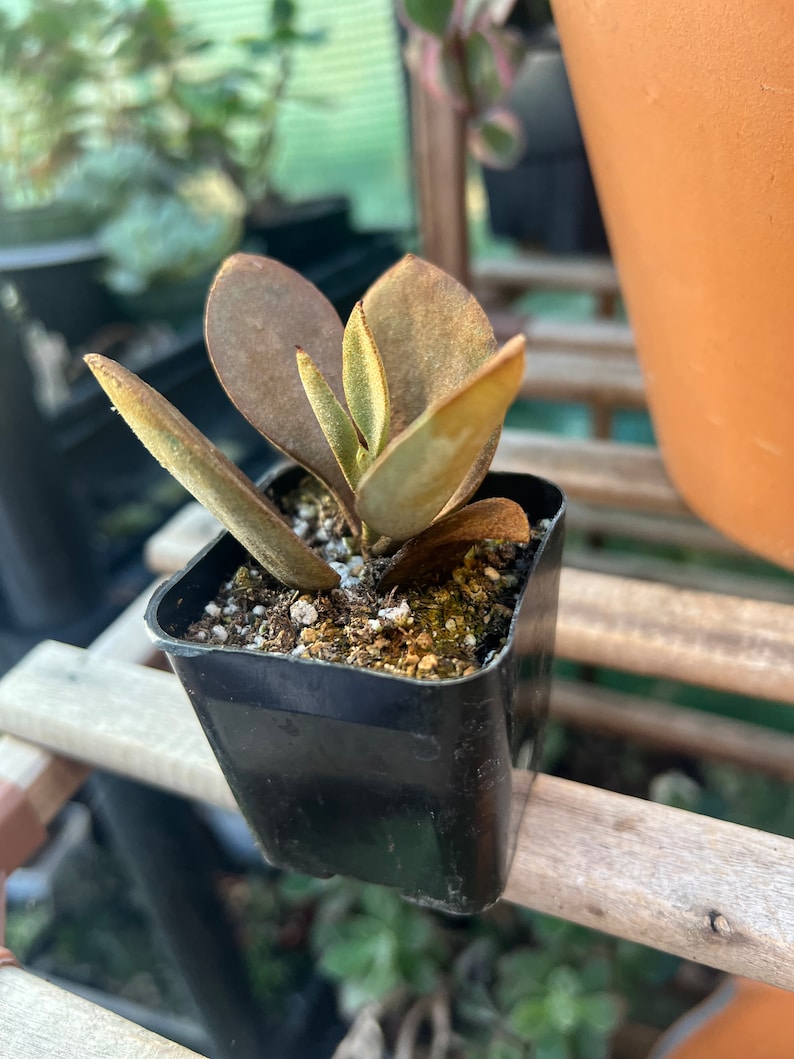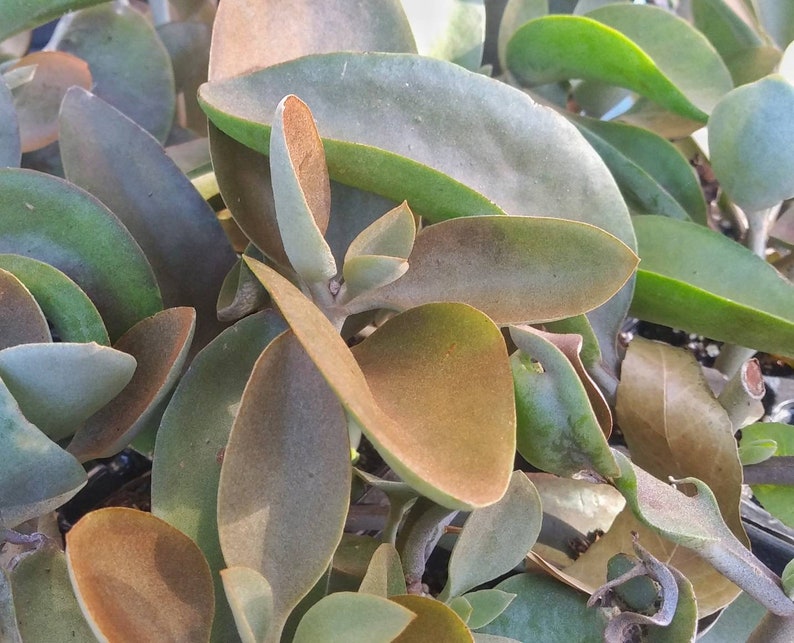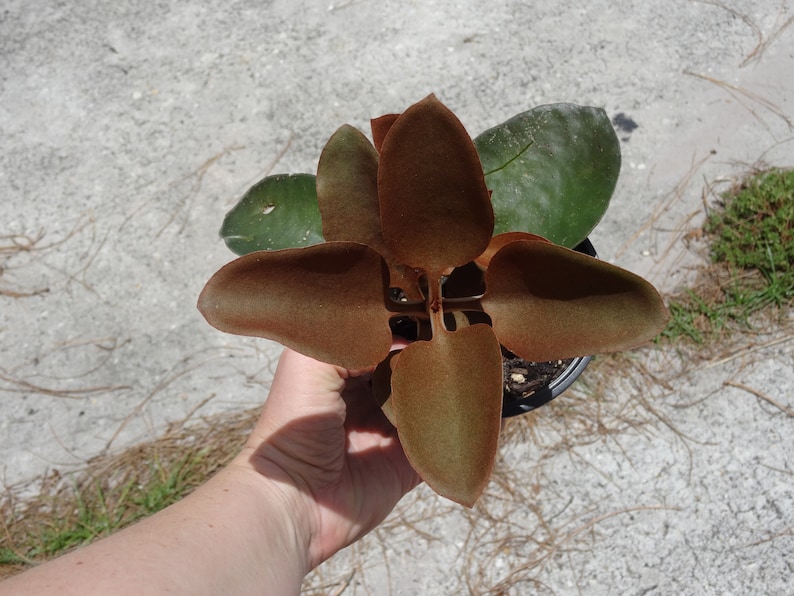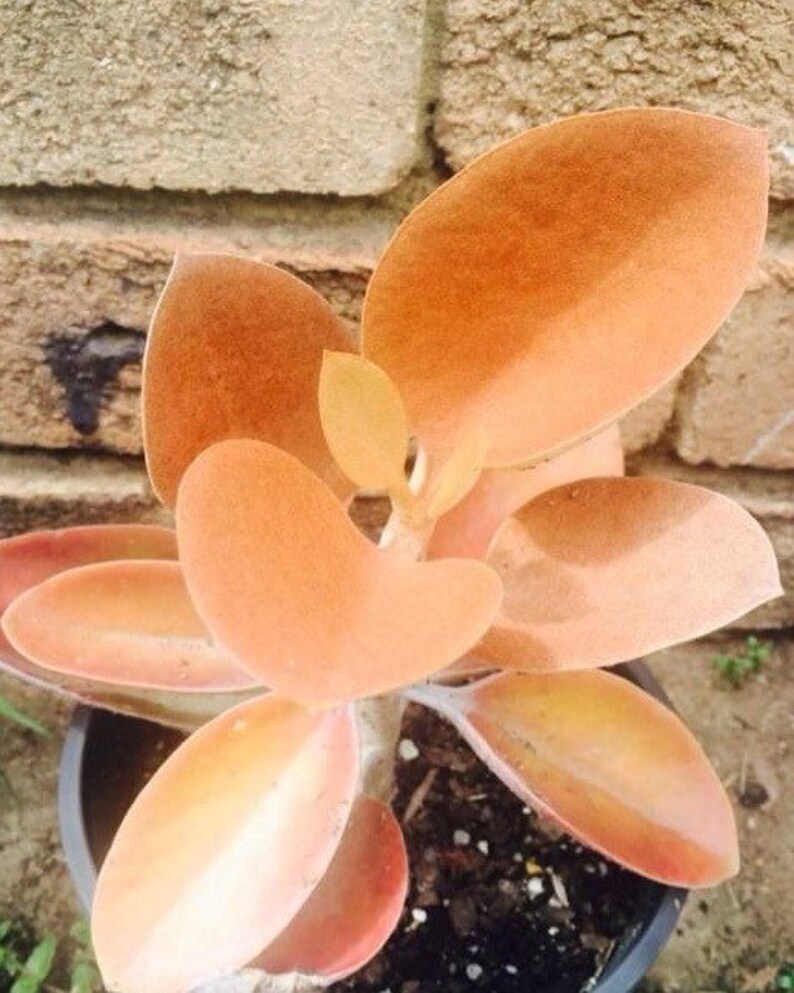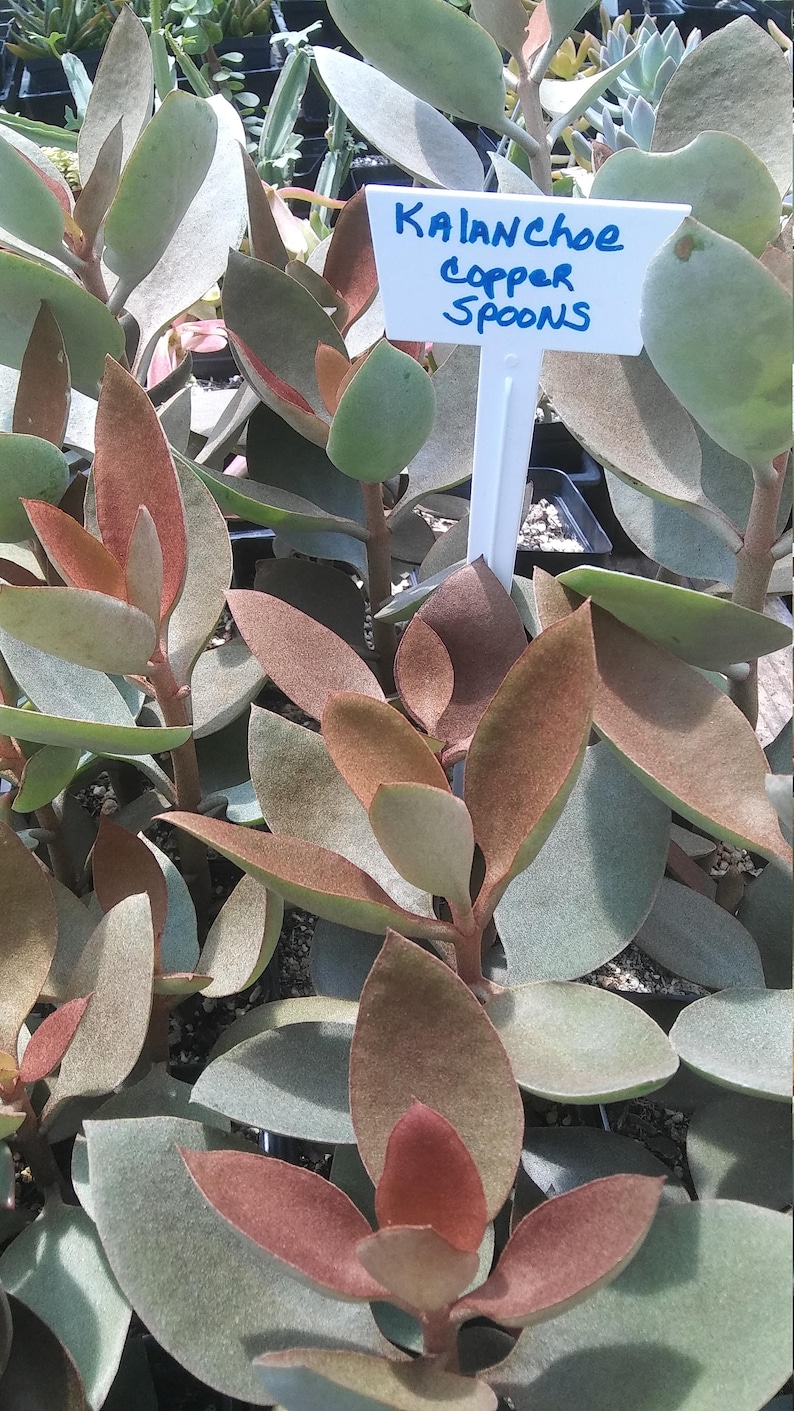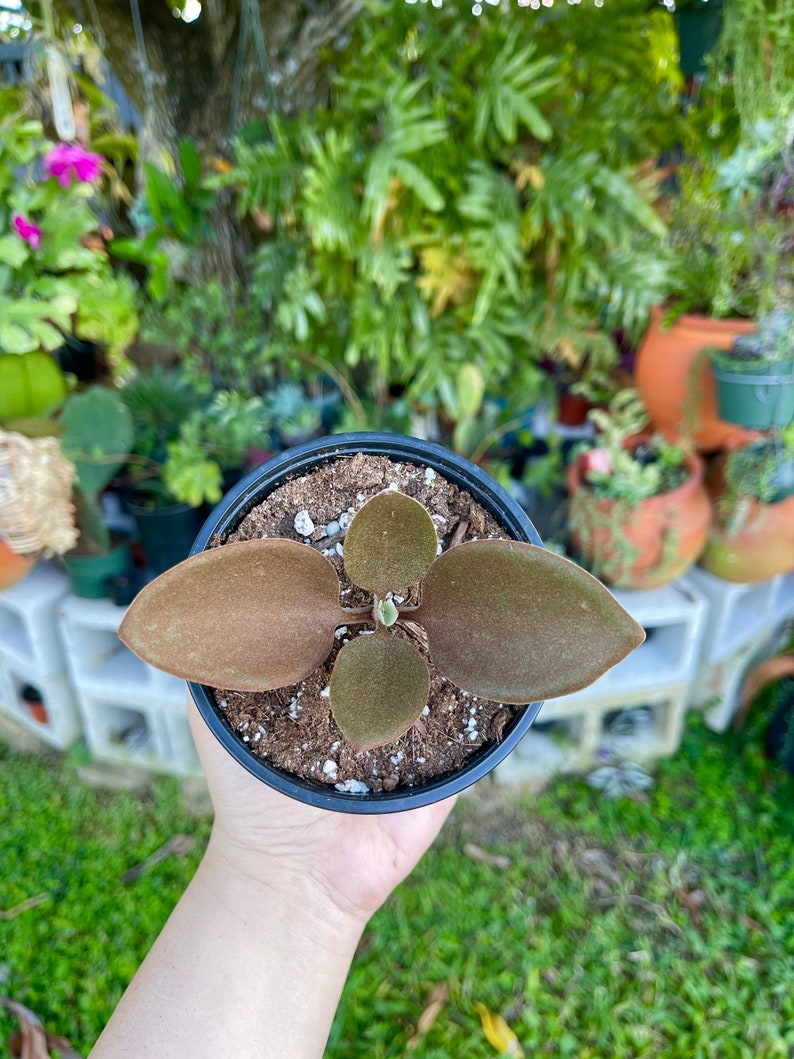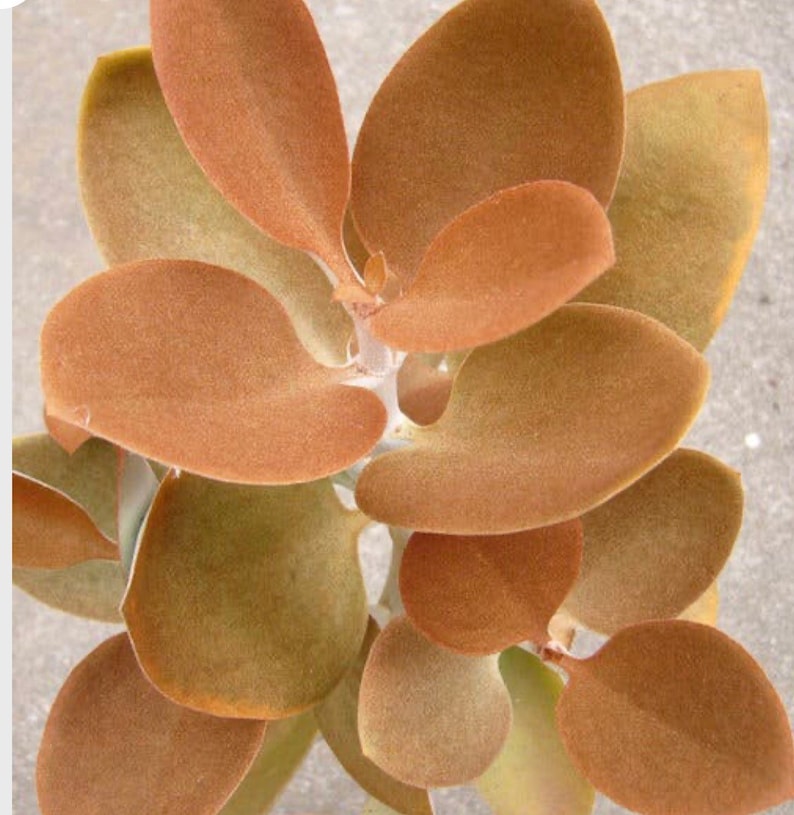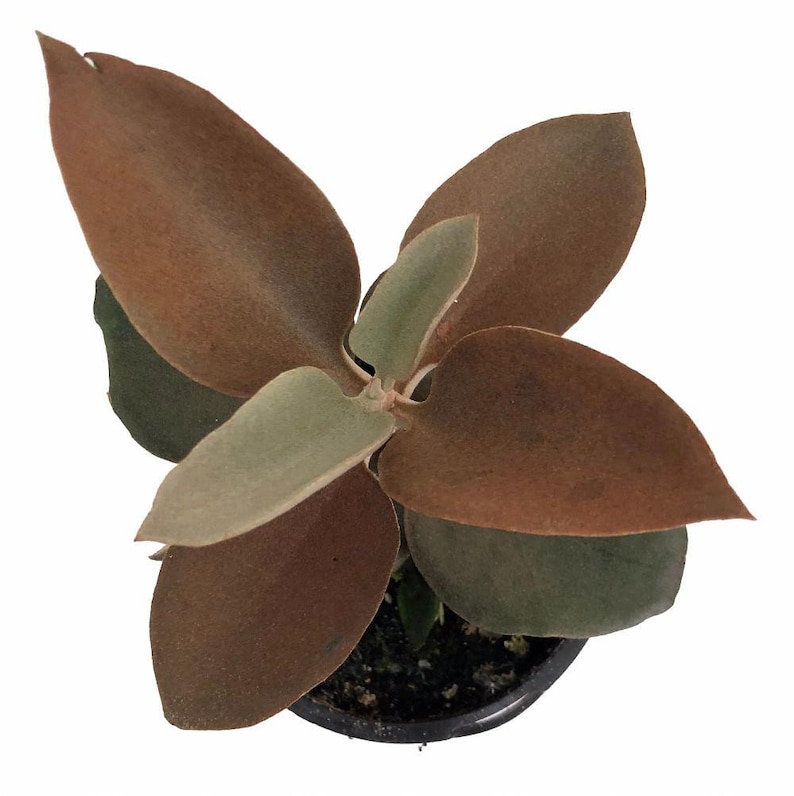Welcome to our comprehensive care guide for Kalanchoe orgyalis, commonly known as ‘Copper Spoons’. This unique succulent is known for its striking copper-colored leaves and is a popular choice among succulent enthusiasts. In this guide, we will cover all aspects of caring for Kalanchoe orgyalis, including its appearance, growth habits, care requirements, propagation methods, common problems, and more. Whether you’re a beginner or an experienced succulent lover, this guide will provide you with all the information you need to keep your ‘Copper Spoons’ thriving.
Dig in!

Overview of Kalanchoe orgyalis ‘Copper Spoons’
Common Names
Kalanchoe orgyalis is commonly known as ‘Copper Spoons’. It may also be referred to as ‘Copper Spoons Kalanchoe’.
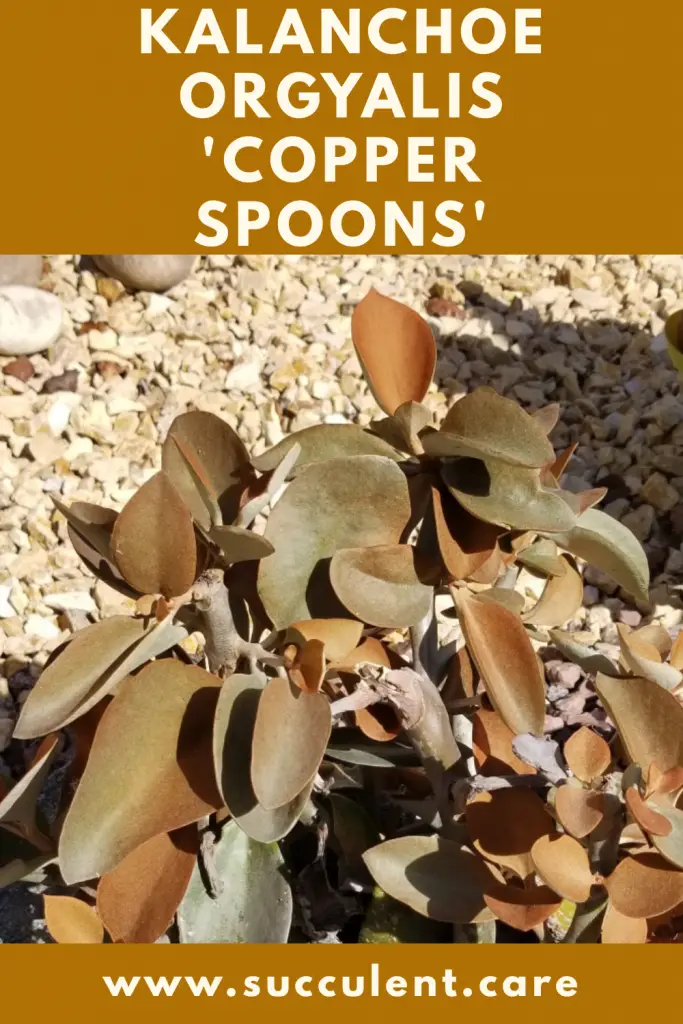
Appearance and Size
The standout feature of Kalanchoe orgyalis ‘Copper Spoons’ is its unique foliage. The leaves are elongated, spoon-shaped, and have a beautiful coppery color. The upper surface of the leaves is covered in fine, cinnamon-colored hairs, giving them a velvety texture. The undersides of the leaves are silver-gray in color. The plant can grow up to 2 to 3 feet (60 to 90 centimeters) in height, with a spread of about 1 to 2 feet (30 to 60 centimeters).

Flowering and Bloom Time
Kalanchoe orgyalis ‘Copper Spoons’ produces small, tubular, bell-shaped flowers. The flowers are typically orange-red or yellow in color and are arranged in clusters on tall, upright stalks called inflorescences. The plant usually blooms during the late winter to early spring, although flowering is not the primary attraction of this succulent.

Care Requirements for Kalanchoe orgyalis ‘Copper Spoons’
Light Requirements
Kalanchoe orgyalis ‘Copper Spoons’ thrives in bright, indirect light. It does well in partial shade or filtered sunlight. Placing the plant near a south-facing window with a sheer curtain is ideal. Avoid exposing it to direct sunlight for prolonged periods, as it can scorch the leaves.
Watering Frequency
As a succulent, ‘Copper Spoons’ has low to moderate watering needs. It is important to allow the soil to dry out between waterings to prevent root rot. During the active growing season (spring to fall), water the plant thoroughly and then allow the top inch (2.5 centimeters) of soil to dry out before watering again. In winter, reduce watering and only water when the soil is completely dry.
Soil Requirements
Well-draining soil is crucial for the health of Kalanchoe orgyalis ‘Copper Spoons’. A commercial succulent or cactus potting mix works well, or you can create your own by combining regular potting soil with perlite or pumice to improve drainage. Avoid using heavy or water-retentive soils, as they can lead to root rot.
Temperature Tolerance
Kalanchoe orgyalis ‘Copper Spoons’ is native to Madagascar and is adapted to warm temperatures. It can tolerate a minimum temperature of 50°F (10°C). However, it is best to provide the plant with temperatures between 60°F and 75°F (15°C and 24°C) for optimal growth.
USDA Hardiness Zone
Kalanchoe orgyalis ‘Copper Spoons’ is not frost-tolerant and is typically grown as a houseplant or in containers. It is recommended for USDA hardiness zones 9 to 11. In colder regions, it can be kept indoors during winter or moved outside during the warmer months.
Fertilizer Requirements
To promote healthy growth and vibrant foliage, feed Kalanchoe orgyalis ‘Copper Spoons’ with a balanced, water-soluble fertilizer diluted to half strength. Apply the fertilizer once a month during the active growing season (spring to fall). Be cautious not to over-fertilize, as this can lead to leggy growth or burn the roots.
Repotting Frequency
Kalanchoe orgyalis ‘Copper Spoons’ has a moderate growth rate and typically requires repotting every 2 to 3 years. Choose a pot that allows for proper drainage and provides enough room for the plant’s roots to grow. Repotting is best done in the spring before the start of the active growing season.
Propagation Methods
The easiest and most reliable way to propagate Kalanchoe orgyalis ‘Copper Spoons’ is through stem or leaf cuttings. To propagate from stem cuttings, simply take a healthy stem cutting, remove the lower leaves, and allow the cut end to callous for a few days. Plant the cutting in well-draining soil and keep it lightly moist until roots develop. Leaf cuttings can also be taken, but they may take longer to root.
Pests and Prevention
Kalanchoe orgyalis ‘Copper Spoons’ is generally resistant to pests and diseases. However, like other succulents, it can occasionally attract mealybugs, aphids, or spider mites. Regularly inspect the plant for any signs of infestation, such as sticky residue, webbing, or tiny insects. If pests are present, gently wipe them off with a damp cloth or use an insecticidal soap or neem oil solution to control the infestation.
Common Problems and Solutions
- Overwatering: Excessive watering can lead to root rot and other issues. Ensure that the soil has dried out before watering again, and adjust your watering frequency accordingly.
- Leaf Drop: If your ‘Copper Spoons’ is dropping leaves, it may be a sign of overwatering, underwatering, or insufficient light. Check the soil moisture, adjust your watering schedule, and ensure the plant is receiving adequate light.
- Leggy Growth: Insufficient light can cause the plant to stretch and become leggy. Move the plant to a brighter location or provide supplemental grow lights to encourage compact growth.
- Leaf Discoloration: If the leaves of your Kalanchoe orgyalis ‘Copper Spoons’ are turning brown or developing spots, it may be due to excessive sunlight or cold drafts. Adjust the plant’s placement to provide the appropriate lighting and temperature conditions.
Kalanchoe orgyalis, or ‘Copper Spoons’, is an eye-catching succulent known for its unique copper-colored leaves. With the right care and attention, this plant can thrive and add a touch of elegance to any indoor or outdoor space. Remember to provide it with bright, indirect light, well-draining soil, and moderate watering. Regularly monitor the plant for any signs of pests or diseases, and adjust its care accordingly. By following the guidelines in this comprehensive care guide, you can enjoy the beauty of Kalanchoe orgyalis ‘Copper Spoons’ for years to come.

